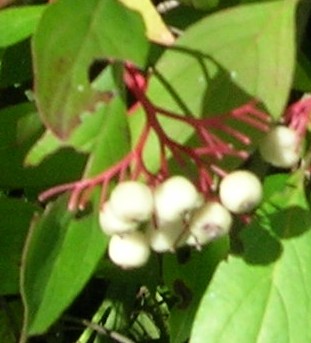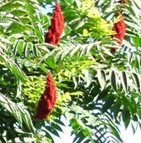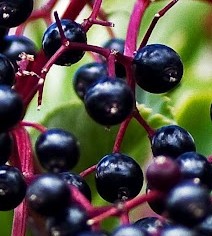 The thrush family includes the familiar robin and bluebirds as well as many birds called thrushes. They are small to medium birds with plump bodies, round heads, relatively long tails, strong bills,and legs and feet adapted for perching. The most colorful of the thrush is probably the bluebird, with the robin in second place, as most of the other thrushes are shades of brown, black and gray, sometimes spotted or barred. Some thrushes such as the wood thrush, hermit thrush, and veery, are known for their beautiful songs. Thrushes have a world-wide distribution and are common in the United States. Some like the American robin, hermit thrush, and Swainson’s thrush may be found across the country, while others like Townsend’s solitaire and varied thrush are found only in the West. Thrushes tend to be non-migratory but move around in their territory as the seasons change. They are insectivorous and enjoy beetles, ants, sowbugs, crickets and grasshoppers as well as spiders but also may eat worms, snails, slugs, salamanders, and berries. Although American robins and bluebirds often come out into the open most thrushes prefer the low dense cover that shrubs can provide.
The thrush family includes the familiar robin and bluebirds as well as many birds called thrushes. They are small to medium birds with plump bodies, round heads, relatively long tails, strong bills,and legs and feet adapted for perching. The most colorful of the thrush is probably the bluebird, with the robin in second place, as most of the other thrushes are shades of brown, black and gray, sometimes spotted or barred. Some thrushes such as the wood thrush, hermit thrush, and veery, are known for their beautiful songs. Thrushes have a world-wide distribution and are common in the United States. Some like the American robin, hermit thrush, and Swainson’s thrush may be found across the country, while others like Townsend’s solitaire and varied thrush are found only in the West. Thrushes tend to be non-migratory but move around in their territory as the seasons change. They are insectivorous and enjoy beetles, ants, sowbugs, crickets and grasshoppers as well as spiders but also may eat worms, snails, slugs, salamanders, and berries. Although American robins and bluebirds often come out into the open most thrushes prefer the low dense cover that shrubs can provide.
The best way to lure thrushes to your backyard is by planting fruit bearing shrubs and small trees that can provide both food and cover. The berries of the plants in the following list are a big draw for thrushes but other birds may also be drawn to the insects that are attracted to the flowers
 Silky Dogwood (Cornus amomum)
Silky Dogwood (Cornus amomum) This deciduous shrub is a native of eastern North America where it is often found in lowlands, swamp borders, and floodplains. The plants form thickets and produce white flowers followed by metalic steel-gray berries. Thrushes, as well as wrens and native sparrows eat the berries while warblers, vireos and orioles come for the insects attracted by the flowers. Many birds enjoy the cover.
This deciduous shrub is a native of eastern North America where it is often found in lowlands, swamp borders, and floodplains. The plants form thickets and produce white flowers followed by metalic steel-gray berries. Thrushes, as well as wrens and native sparrows eat the berries while warblers, vireos and orioles come for the insects attracted by the flowers. Many birds enjoy the cover.
Size:
-
- 6-12′ H
Site:
-
- Full sun to part shade; moist to medium moist, well-drained, slightly acidic soil
Hardiness:
- Zones 5-8
 Flowering Dogwood (Cornus florida)
Flowering Dogwood (Cornus florida) The showy white to pink flowers produced by this small deciduous tree are a familiar sight in eastern United Staates every spring. The flowers give way to red berries that appeal to thrushes as well as tanagers and waxwings. Other birds such as warblers, vireos, and orioles visit for the insects attracted by the flowers.
The showy white to pink flowers produced by this small deciduous tree are a familiar sight in eastern United Staates every spring. The flowers give way to red berries that appeal to thrushes as well as tanagers and waxwings. Other birds such as warblers, vireos, and orioles visit for the insects attracted by the flowers.
Size:
-
- To 15-30′ H
Site:
-
- Full sun to part shade; moist, well-drained, acidic soil
Hardiness:
- Zones 5-9
 Gray Dogwood (Cornus racemosa)
Gray Dogwood (Cornus racemosa) Native to northeastern United States, this deciduous shrub forms thickets that provide excellent cover for many birds including thrushes. The white berries that follow the clusters of white flowers provide food for thrushes as well as wrens and native sparrows. Birds such as warblers, vireos, and orioles enjoy the insects attracted by the flowers. The red stems that persist into early winter are attractive in the garden after the leaves have fallen.
Native to northeastern United States, this deciduous shrub forms thickets that provide excellent cover for many birds including thrushes. The white berries that follow the clusters of white flowers provide food for thrushes as well as wrens and native sparrows. Birds such as warblers, vireos, and orioles enjoy the insects attracted by the flowers. The red stems that persist into early winter are attractive in the garden after the leaves have fallen.
Size:
-
- 10-15′ H
Site:
-
- Full sun to part shade; moist, well-drained, soil
Hardiness:
- Zones 4-8
 Winterberry (Ilex verticillata)
Winterberry (Ilex verticillata)![]() Avoid the cultivars (except ‘Winter Red’) of this native deciduous shrub or small tree because they are often bred for less tasty berries. Small white flowers in spring are followed by masses of bright red berries in fall, perfect for flower arrangements if the thrushes, and wax wings don’t get them first. Bluebirds especially love them. Male and female trees are needed for berry production.
Avoid the cultivars (except ‘Winter Red’) of this native deciduous shrub or small tree because they are often bred for less tasty berries. Small white flowers in spring are followed by masses of bright red berries in fall, perfect for flower arrangements if the thrushes, and wax wings don’t get them first. Bluebirds especially love them. Male and female trees are needed for berry production.
Size:
-
- 3-12′ H
Site:
-
- Full sun to part shade; medium to wet acidic soil
Hardiness:
- Zones 3-9
 Sumac (Staghorn sumac, Rhus typhina; shining sumac, Rhus copallina)
Sumac (Staghorn sumac, Rhus typhina; shining sumac, Rhus copallina) Native to North America sumacs are deciduous shrubs or small trees that produce tight clusters of red berries that persist into winter. Thrushes enjoy the berries while warblers, vireos, flycatchers, orioles and other enjoy the insects attracted by the flowers. Woodpeckers are attracted to the berries of Rhus typhina. Cut back the plants in late winter to encourage the growth of thickets.
Native to North America sumacs are deciduous shrubs or small trees that produce tight clusters of red berries that persist into winter. Thrushes enjoy the berries while warblers, vireos, flycatchers, orioles and other enjoy the insects attracted by the flowers. Woodpeckers are attracted to the berries of Rhus typhina. Cut back the plants in late winter to encourage the growth of thickets.
Size:
-
- 7-15’H (Rhus copallina); 15-25’H (Rhus typhina)
Site:
-
- Full sun to part shade; dry to medium, well-drained soil
Hardiness:
- R. typina zones 3- 8; R. copallina zones 4-9
 Elderberry (Sambucus spp and cultivars)
Elderberry (Sambucus spp and cultivars) These deciduous small trees or shrubs are multi-stemmed and fast growing. Their large clusters of white flowers in spring give way to clusters of small juicy berries. Thrushes, wrens, orioles and other birds are attracted to the fruit.The insects around the flowers attract kinglets as well warblers, vireos, orioles, and flycatchers.
These deciduous small trees or shrubs are multi-stemmed and fast growing. Their large clusters of white flowers in spring give way to clusters of small juicy berries. Thrushes, wrens, orioles and other birds are attracted to the fruit.The insects around the flowers attract kinglets as well warblers, vireos, orioles, and flycatchers.
Size:
-
- 8-15′ H depending on the variety
Site:
-
- Sun; moist, well-drained
Hardiness:
- Zones 3-9
